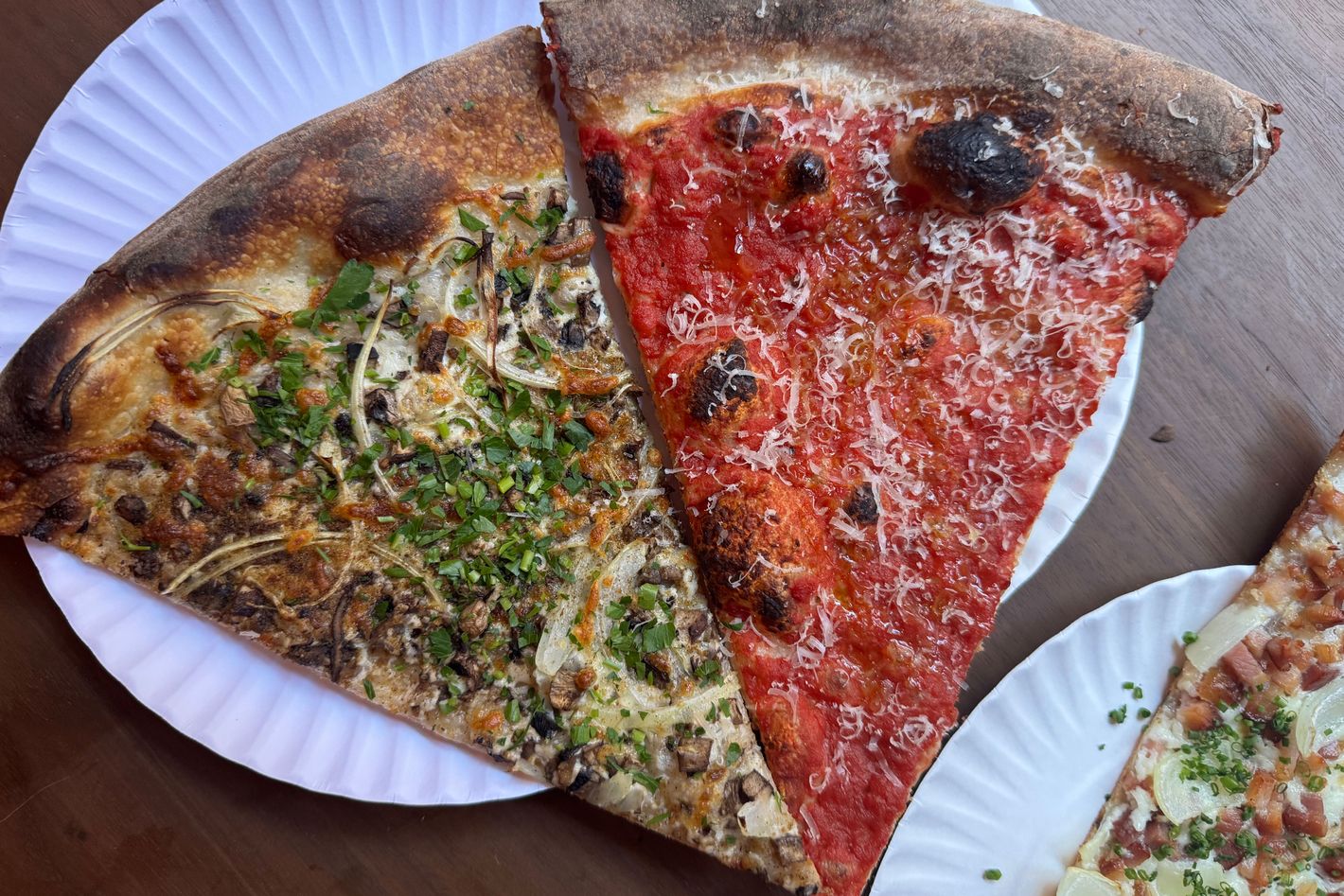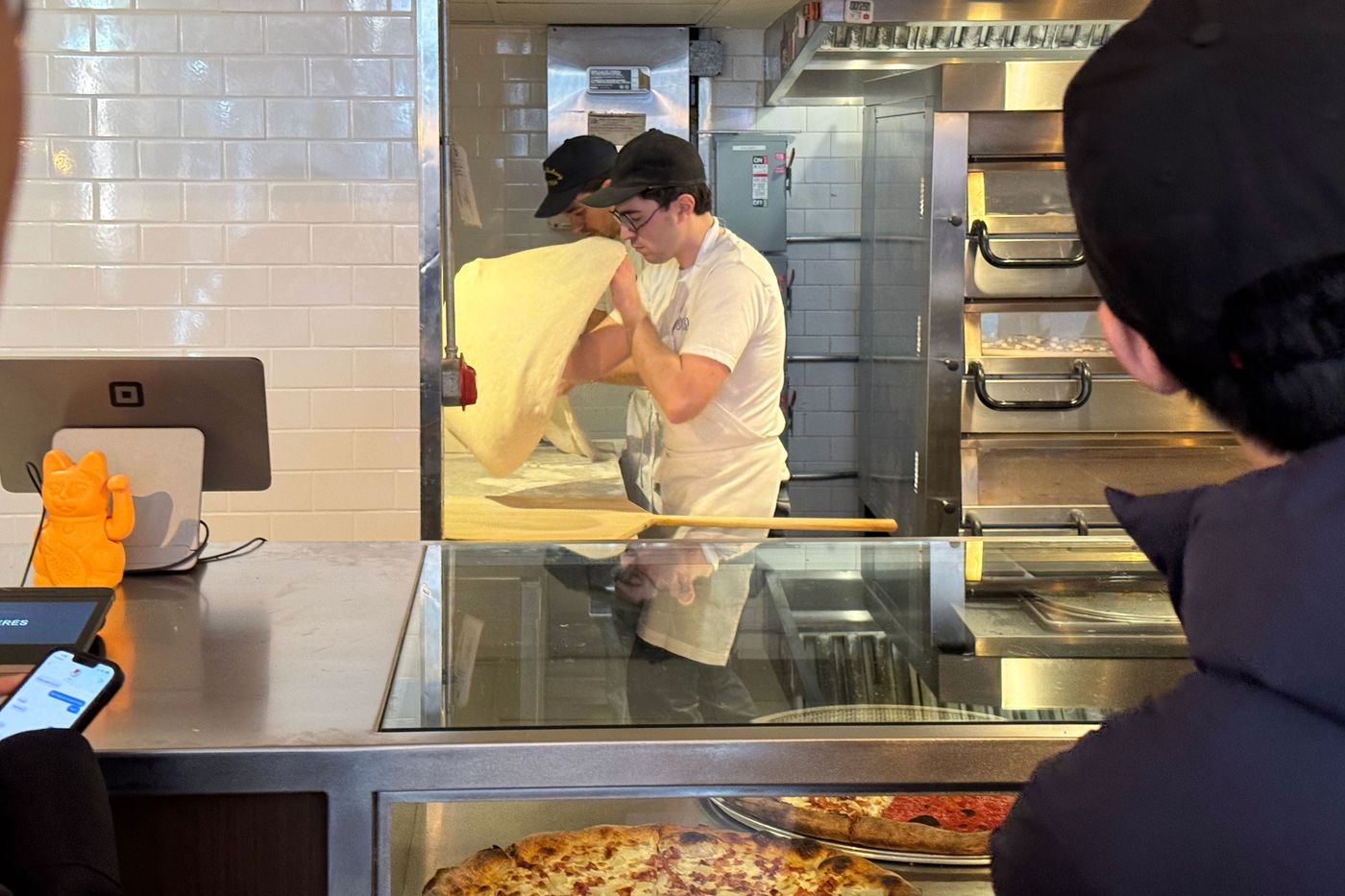when you want, where you want.
CJ Television
Ceres Is the New Hype Slice, But Are Its $40 Pizzas Any Good?
 Photo: Grub Street
Photo: Grub Street
Much like the recent burst of new bakeries that have stoked a fervor for croissants, conchas, and cinnamon rolls, pizza has also found itself in the middle of a renewed hype cycle, where lines and limited drops can be as important as the food itself. Spots like Prince Street Pizza and Scarr’s pioneered a genre that is these days dominated by burrata slices from L’Industrie, clam pies and cacio e pepe pizza at F&F, and the once clandestinely distributed Chrissy’s, which has a permanent location in Greenpoint but still won’t serve slices. Now we have the latest entrant, Ceres, a wood-paneled pizzeria next to a Chinese supermarket that opened on Mott Street in late January. Its defining feature is that its founders, Julian Geldmacher and Jake Serebnick, met while working at Eleven Madison Park and are applying the rigors of World’s 50 Best–style cooking to the once-humble slice.
The EMP of it all is important, because the first thing people notice about this pizzeria is its prices: $40 for a cheese pie (Lucali charges $32), up to $63 for a pizza with ’nduja, burrata, and aceto Balsamico. Unlike some of its contemporaries, Ceres does sell slices: $5 for a San Marzano tomato slice, $6 for regular cheese (made with both plain mozz and longer-aged scamorza), and upwards from there.
Whether someone is waiting for a single slice or a whole pizza, everyone stands in the same line. At 2:09 last Saturday afternoon, I became the 23rd person to queue up outside the door, with another dozen or so waiting inside the shop. The demographics leaned mid-20s and male-heavy, with lots of representation from the gorpcore set.
It was 20 minutes before my friends and I were able to enter the wood-paneled pizzeria, where, despite the steel dining counter and paper plates, mid-century rattan chairs aligned the room with its premium prices. Suddenly, everything stopped: For 15 minutes — an eternity for anyone waiting on line to eat pizza — there were no sales at all. Geldmacher and Serebnick, who were taking turns as cashier and server, needed to catch up on their pizzas, which are not simply thrown together. Instead of flouring the dough by the fistful, it’s applied evenly with a sieve, while tomato sauce is spread in a spiral motion from the center. Crème fraîche, which tops the white pies, is dispensed from a piping bag. At the same time, they use an infrared thermometer to constantly keep an eye on the oven’s temperature.
Amazingly, the line remained calm during the lull, though I could hear murmurs of complaints (“This was your idea,” someone said pointedly upon seeing the line). Once the first new round of cheese pies emerged from the oven, the duo resumed taking orders. When it was my turn, Geldmacher asked how long I’d been waiting. Fifty-five minutes.
The move that I saw most people employ was to order some individual slices as a sort of appetizer to eat while they waited for their whole pies to be delivered. I did the same, ordering a cheese pie along with three slices: mushroom, white, and tomato.
I eyed the reheated slices with some suspicion, but they were perfectly revived in the oven. The thin crust was lightweight and sturdy, cooked to the limit, with dark spots on the underside and surface of the pizza. The sourdough recipe was apparent once I flayed open the toasted crust to expose a long webby structure that was still moist, as well as a cushion of tiny bubbles set in between the bottom of the pizza and sauce layer. The tomato pizza was concentrated and tangy, while the white pizza (with pancetta, onion, and the piped crème fraîche) slice was a worthy Flammkuchen knockoff. The shaved-mushroom slice, also topped with crème fraîche and onions, surprised us all with its savory, roasted top.
 Photo: Grub Street
Photo: Grub Street
It wasn’t too long before Geldmacher brought over the whole pizza. The top was extra cheesy for such a thin crust, melding with the tomato sauce all around. It was brightened up by a flash of herbal flavor from a peppery finish of olive oil.
So, here is the $40 question: Is this pizza worth the money, plus an hour on line? I fear it is, mostly because you can see exactly where that money goes: precision. Watching Serebnick shape the dough for 90 seconds, sieve the flour, and literally stop business to make his pizza correctly demonstrates a level of commitment while also acting as insurance against a bad pie because they will catch the mistakes before their customers do. The cost here is the reality of specialized labor, ingredients, and location.
The line didn’t wane, and I could sense the eyes of onlookers as my friends and I devoured the eight-slice pie. We became onlookers ourselves when the people next to us opened a box containing the ’nduja pizza dotted with cold white blobs of stracciatella. On our way out, there were fewer people waiting outside than earlier, but I can’t say for sure whether they got served before lunch was supposed to end at 4 p.m. On Instagram, the pizzeria posted that it’d sold out for the day an hour before it was scheduled to close.
More Eating New York
All Rights Reserved. Copyright , Central Coast Communications, Inc.